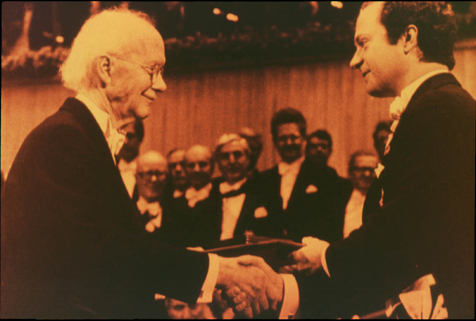
Faculty Research 1980 - 1989
Mechanisms underlying generation of gradients in gene expression within the intestine: an analysis using transgenic mice containing fatty acid binding protein-human growth hormone fusion genes.
Document Type
Article
Publication Date
1988
Keywords
Base-Sequence, Carrier-Proteins: bi, ge, Cloning-Molecular, Comparative-Study, Epithelium: me, Human, Immunoblotting, Immunoenzyme-Technics, Intestines: me, Kidney-Tubules-Proximal: me, Liver: me, Mice, Mice-Transgenic, Mosaicism, Nucleic-Acid-Hybridization, Organ-Specificity, Promoter-Regions-(Genetics), Radioimmunoassay, Regulatory-Sequences-Nucleic-Acid, Restriction-Mapping, RNA: bi, Somatotropin: bi, bl, ge, SUPPORT-NON-U-S-GOVT, SUPPORT-U-S-GOVT-P-H-S
First Page
1318
Last Page
1332
JAX Source
Genes Dev 1988 Oct; 2(10):1318-32.
Grant
DK30292, DK34384, 5P30-CA34196-05
Abstract
The intestine is lined by a continuously regenerating epithelium that maintains gradients in 'liver' fatty acid binding protein (L-FABP) gene expression along its horizontal and vertical axes, i.e., from duodenum to colon and from crypt to villus tip. To identify cis-acting DNA sequences responsible for these regional differences, we linked portions of the L-FABP gene's 5' nontranscribed region to the human growth hormone (hGH) gene and examined hGH expression in transgenic mice. Nucleotides -596 to +21 of the rat L-FABP gene correctly directed hGH expression to enterocytes and hepatocytes. However, anomalous expression was observed in small intestinal crypts, colon, and renal proximal tubular epithelial cells. Addition of nucleotides -4000 to -597 of the L-FABP gene, in either orientation, suppressed renal hGH expression and restored a nearly normal horizontal, but not a vertical, hGH gradient in the intestine. Thus, horizontal gradients of gene expression within the intestine can be maintained by orientation-independent, cis-acting suppressor elements.
Recommended Citation
Sweetser DA,
Birkenmeier EH,
Hoppe PC,
McKeel DW,
Gordon JI.
Mechanisms underlying generation of gradients in gene expression within the intestine: an analysis using transgenic mice containing fatty acid binding protein-human growth hormone fusion genes. Genes Dev 1988 Oct; 2(10):1318-32.

